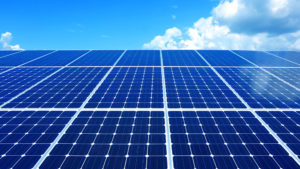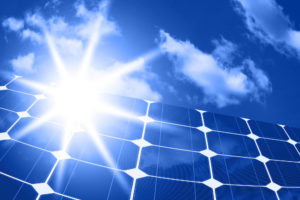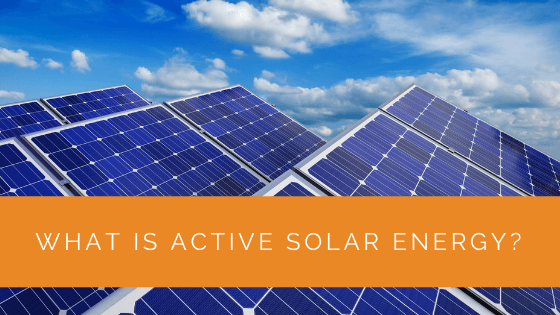Solar energy is becoming popular among households and residences to help them cut down electricity expenses. If you are interested in harnessing the power of sunlight via a solar panel, you need to install one right now. You’ll probably come across two solar systems – active and passive.
While active solar energy is produced with the help of a mechanical device to store and distribute it, passive solar energy doesn’t use such equipment. Both are efficient, but there are differences in the way they absorb and process sunlight to produce electricity.
This article will discuss active solar energy, the related devices, and its difference from passive solar energy.
Contents
- 1 Key Takeaways
- 2 A Brief Definition Of Active Solar Energy
- 3 How Do Active Solar Systems Work?
- 4 What Are The Benefits Of Active Solar Energy?
- 5 What Is Passive Solar Energy?
- 6 Differences Between Active And Passive Solar Energy
- 7 Expert Insights From Our Solar Panel Installers About Active Solar Energy
- 8 Experience Solar Excellence with Us!
- 9 In Conclusion
Key Takeaways
- Active solar energy involves the use of mechanical or electronic devices to capture and store solar energy efficiently. It utilizes collectors, pumps, batteries, and controllers to harness sunlight for electricity or heating purposes.
- Active solar systems work by collecting solar energy in insulated containers, transferring it to fluids or air, and storing it for distribution through various mechanisms like radiant slabs, pumps, and ducts.
- The benefits of active solar energy include cost savings on electricity bills, reliable heating solutions, durability of panels, heating of pools and residences, low environmental impact, and the ability to circulate hot water effectively.
A Brief Definition Of Active Solar Energy
Active solar energy can be considered the form of energy that can be captured and preserved for future use. This form of energy is enhanced by using mechanical or electronic equipment, making it a more efficient and sustainable form of energy.
The systems producing active solar energy use devices such as collectors, pumps, blows, and voltage controllers to capture and process direct sunlight. These systems also include batteries that can store the energy for future use.
This stored energy can be used to provide electricity for buildings or heat them. Besides homes and commercial properties, active solar energy can be utilized anywhere, requiring a low temperature.
How Do Active Solar Systems Work?
Active solar energy systems use solar energy for heating fluids or a liquid. You can consider this a way to capture the heat for further use. Liquids are used as they are good conductors of heat and energy.
Initially, the solar energy is collected in a container called a solar collector. The collector is an insulated box that is covered with glass. Also known as a flat plate collector, this box has black plates inside it, absorbing solar energy and converting it into heat.
After that, the heat is transferred to air or fluid within the collector. Depending on if it is liquid or air-based, the heat is further moved for storage. If the system is liquid-based, solar energy will be stored using thermal mass or water tanks.
On the other hand, if it is air-based, the solar energy in the form of warm air will be stored inside bins usually made of rock.
For distributing this stored solar energy, radiant slabs, pumps, or hot water baseboards can be used in the case of liquid-based systems. Fans and ducts are used for distributing the heated air in air-based systems.

What Are The Benefits Of Active Solar Energy?
Besides being a source of green and clean energy, which is also sustainable, active solar energy has these amazing benefits –
- Even if the installation gets a little expensive, active solar energy makes it up with the reduction in your electric bills. If you plan to live somewhere for years or set up an office space, this can be an excellent move.
- It’s an excellent way to keeps interiors heated and warm, especially during cold climates.
- The panels are robust in design and long-lasting, usually with a warranty of more than a decade. So, it’s a great bang for your buck.
- It can easily heat the water in your pool by passing it through the solar collectors. After heating, the water can be transferred back to the pool area.
- You can use active solar systems to heat the water in your residence effectively. Here, the pumps will circulate the water for use.
- These systems produce no emissions and have a lower carbon footprint.
What Is Passive Solar Energy?
Passive solar energy is produced by systems that don’t depend on any external devices to absorb and store solar energy. These devices have passive collectors to absorb the heat and transform it into usable energy. As they’re based on the laws of thermodynamics, these systems are not complicated like active solar panels.
For producing passive solar energy, specially manufactured windows are positioned on the southern side of a building to capture sun rays. Passive solar energy is excellent for heating and cooling residences, especially small ones.
This form of solar energy is cost-efficient and eco-friendly. There are no hassles of external equipment, which makes installing passive solar energy systems simpler. You will also save a lot of installation expenses.
Another important advantage of passive solar energy is that it doesn’t lead to any allergies or health complications. So, you can say it’s a good investment for a small establishment.
However, as passive solar energy production depends on the weather, heavy rains or cloudy weather won’t be of much help.

Differences Between Active And Passive Solar Energy
Let’s check out the differences between active and passive solar energy:
| Passive Solar Energy | Active Solar Energy |
|---|---|
| This form of energy is produced without the assistance of any external devices. | Here, energy is produced with the help of external devices such as collectors, pumps, and blowers. |
| No air or fluid is used, it is purely based on the laws of thermodynamics. | Air or fluid is used to capture heat and turn it into energy. |
| The solar heat is captured using specialized walls or roofs within the passive heating system’s architecture. | The solar heat is captured by an insulated box called a solar collector. |
| Initial installation and setup of a passive solar system are simple. | Installation and setup can be complicated, as there are multiple components of an active solar system. |
| This type of energy can only be produced in areas having sufficient sunlight and southern exposure. | Active solar energy can be produced anywhere and in any building construction. |
Expert Insights From Our Solar Panel Installers About Active Solar Energy
As an experienced solar installer, I’ve seen firsthand how active solar energy systems can significantly reduce electricity bills while providing reliable heating solutions. The use of mechanical devices like pumps and controllers makes these systems incredibly efficient and sustainable.
Senior Solar Technician
Active solar energy systems offer a great blend of durability and efficiency. The combination of collectors, pumps, and insulated storage systems ensures that the captured solar energy is effectively utilized, even on cloudy days. This makes it an excellent choice for homeowners looking for a long-term energy solution.
Solar Installation Expert
One of the major benefits of active solar energy is its versatility. Whether it’s for heating your pool or providing hot water for your home, these systems are designed to circulate and store energy efficiently, ensuring you have a steady supply of renewable energy year-round.
Lead Solar Engineer
Experience Solar Excellence with Us!
Trust in Solar Panels Network USA, where our seasoned experts deliver top-quality solar solutions for homes and businesses nationwide. With a legacy of countless successful installations and a commitment to sustainable energy, we’re your reliable partner in the solar journey. Ready for a brighter, eco-friendly future? Call us now at (855) 427-0058 and harness the power of the sun!
In Conclusion
If you live in an area that doesn’t have sufficient sunlight, active solar energy systems will be the best fit. Even if they’re a bit expensive, they offer a steady source of energy for your office or residence.
On the other hand, if you have a small apartment or office with plenty of sunlight in your surroundings, you can’t go wrong with passive solar energy. However, you might face issues in regulating the temperature while using passive solar systems.
About the Author
Solar Panels Network USA stands at the forefront of solar energy solutions, driven by a team of seasoned solar engineers and energy consultants. With over decades of experience in delivering high-quality solar installations and maintenance, we are committed to promoting sustainable energy through customer-centric, tailored solutions. Our articles reflect this commitment, crafted collaboratively by experts to provide accurate, up-to-date insights into solar technology, ensuring our readers are well-informed and empowered in their solar energy decisions.

